Why does cold weather affect batteries?
Low-temperature use of lithium-ion batteries has problems such as low capacity, severe attenuation, poor cycle rate performance, obvious lithium deposition, and unbalanced lithium. According to reports, the discharge capacity of lithium-ion batteries at-20°C is only about 31.5% at room temperature. Conventional lithium-ion batteries operate at temperatures between -20 and +55°C. However, in the fields of aerospace, special, electric vehicles,etc.,the battery is required to work normally at-40°C. Therefore, it is of great significance to improve the low-temperature properties of lithium-ion batteries. Grepow Battery has developed and produced high-performance low-temperature batteries with a temperature range of -40°C to 50°C.
Factors limiting the low-temperature performance of lithium batteries
In a low-temperature environment, the viscosity of the electrolyte increases or even partially solidifies, resulting in a decrease in the conductivity of the lithium-ion battery. The compatibility between the electrolyte and the negative electrode and the separator deteriorates in a low-temperature environment. In the low-temperature environment, lithium is severely precipitated in the negative electrode of the lithium-ion battery, and the precipitated metal lithium reacts with the electrolyte, and the product deposition causes an increase in the thickness of the solid electrolyte interface(SEI). In the low-temperature environment, the lithium-ion battery has a reduced internal diffusion system of the active material, and the charge transfer impedance(RCT)is significantly increased.
Research on low-temperature electrolyte
The electrolyte plays a role in the transfer of lithium ions in the lithium-ion battery, and its ionic conductivity and SEI film-forming performance have a significant effect on the low-temperature performance of the battery.
Judging the advantages and disadvantages of low-temperature electrolytes, there are three main indicators: ionic conductivity, electrochemical window, and electrode reactivity. The level of these three indicators depends to a large extent on their constituent materials: solvent, electrolyte(lithium salt).), additive. Therefore, the study of the low-temperature properties of various parts of the electrolyte is of great significance for understanding and improving the low-temperature performance of the battery.
Low-temperature characteristics of EC-based electrolytes Compared with chain carbonates, cyclic carbonates have a compact structure, high force, and high melting point and viscosity. However, the large polarity brought about by the ring structure tends to have a large dielectric constant. The large dielectric constant of the EC solvent, high ionic conductivity, excellent film-forming properties, and effective prevention of co-insertion of solvent molecules, It has an indispensable position. Therefore, most of the commonly used low-temperature electrolyte systems are based on the EU, and then mixed with low melting point small molecule solvents.
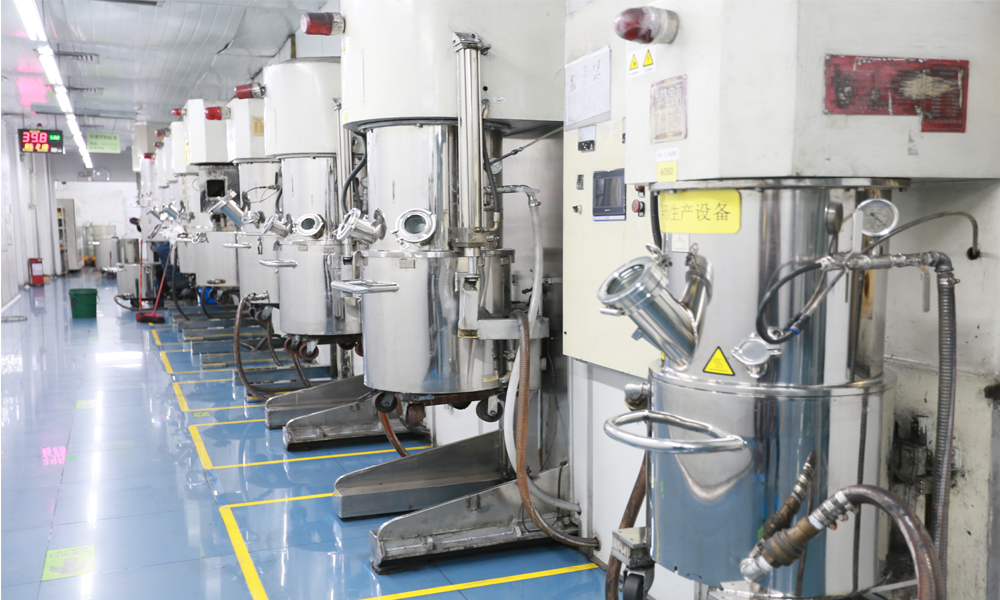
Lithium salts are an important component of electrolytes. The lithium salt not only increases the ionic conductivity of the solution in the electrolyte but also reduces the diffusion distance of lithium ions in the solution. In general, the greater the concentration of lithium ions in the solution, the greater the ionic conductivity. However, the concentration of lithium ions in the electrolyte is not linearly related to the concentration of the lithium salt but is parabolic. This is because the concentration of lithium ions in the solvent depends on the dissociation of the lithium salt in the solvent and the strength of association.
Low-temperature electrolyte
In addition to the battery composition itself, the process factors in actual operation will also have a great impact on battery performance.
Preparation process
The influence of electrode load and coating thickness on the low-temperature performance of the battery.As far as the capacity retention rate is concerned, the smaller the electrode load, the thinner the coating layer, and the better the low-temperature performance.
Charge and discharge state
The effect of low-temperature charge and discharge state on battery cycle life, and found that when the discharge depth is large, it causes a large capacity loss and reduces cycle life.
Other factors
The surface area of the electrode, the pore size, the electrode density, the wettability of the electrode and the electrolyte, and the separator all affect the low-temperature performance of the lithium-ion battery. In addition, the effects of defects in materials and processes on the low-temperature performance of the battery cannot be ignored.
Ensure the low-temperature performance of lithium-ion batteries
In order to ensure the low-temperature performance of lithium-ion batteries, the following points need to be done: forming a thin and dense SEI film; the guaranteed Li+has a large diffusion coefficient in the active material; the electrolyte has high ionic conductivity at low temperature. Grepow battery uses low-temperature electrolyte at low temperature, which can ensure the normal operation of the equipment in the low-temperature environment.
Breakthrough the effects of low temperatures on batteries
Compared with the conventional lithium-ion battery, Grepow battery low-temperature battery, the temperature range of-40°C to 50°C, Compared with traditional Li-Polymer batteries, it has broken through the discharge temperature limits of -20℃ to 60℃. It is expected to completely solve the battery capacity at low temperatures Attenuation issues and loop safety issues.
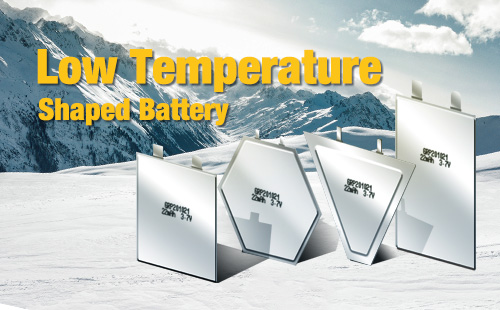
Grepow low temperature shaped battery can effectively improve the discharge performance of the battery in the low-temperature environment, reduce the internal resistance of the battery, and achieve the effect of high rate discharge. Therefore, its battery life is longer and its power is stronger. Under low temperature, the capacity of Grepow's low temperature shaped battery still over 80% by 0.2C discharge at -30 °C. Flexible size, the battery can be designed according to customer's size. Grepow produces low-temperature battery can be widely used in cold climates and special products. Such as GPS, car trackers, special radios, broken line indicators, aerospace, aviation, deep sea snorkeling, polar science, adventure, cold belt rescue, disaster relief, winter clothes, cold shoes, and other systems. Grepow's R&D team works closely with clients to provide the best power solutions for their batteries.
If you are interested in our products, please don't hesitate to contact us at any time!
Email: info@grepow.com
Grepow Website: https://www.grepow.com/
Related Articles
-
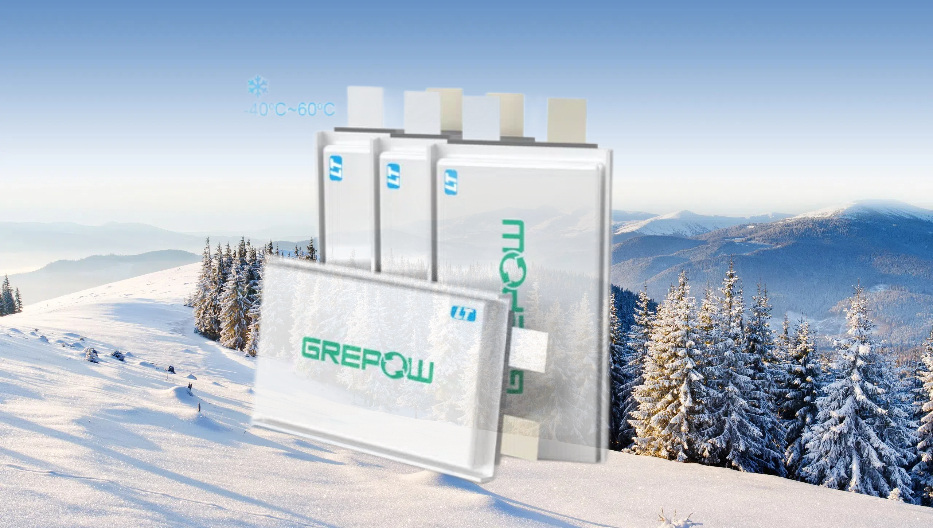
How to Choose Lithium Batteries for Cold Weather?
2024-09-19 -
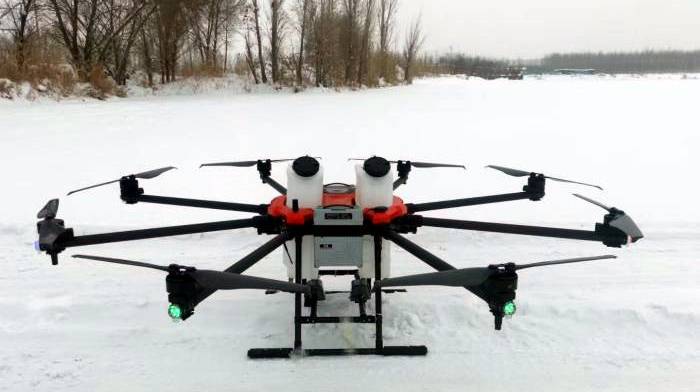
What is the impact of long coldness on Agriculture Spraying UAVs Batteries and how to deal with it?
2022-12-12 -
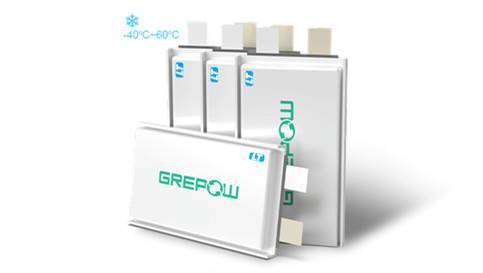
Low Temperature Lithium Batteries Recharge at Minus 20℃
2022-12-01
Related products
-
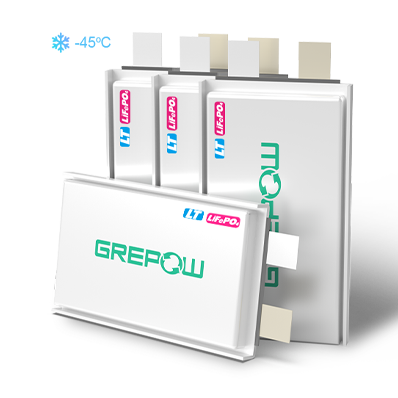
-40℃ Low Temperature LiFePO4 Battery
-
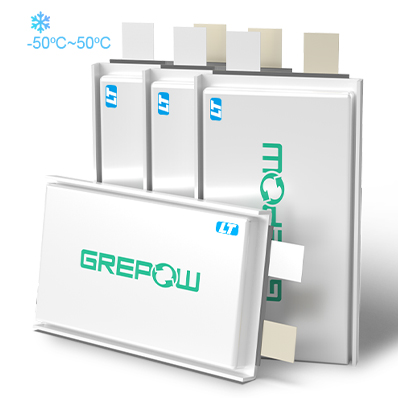
-50℃ to 50℃ Low Temperature Lipo Battery
-
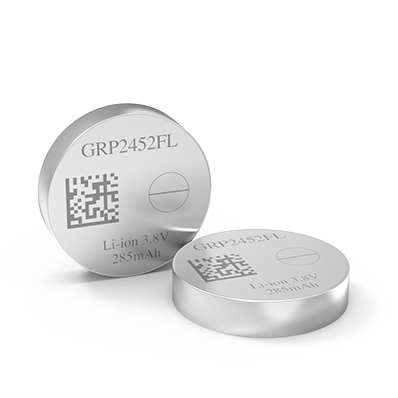
GRP2452FL Rechargeable Lithium-Ion Button Cell Battery
















































